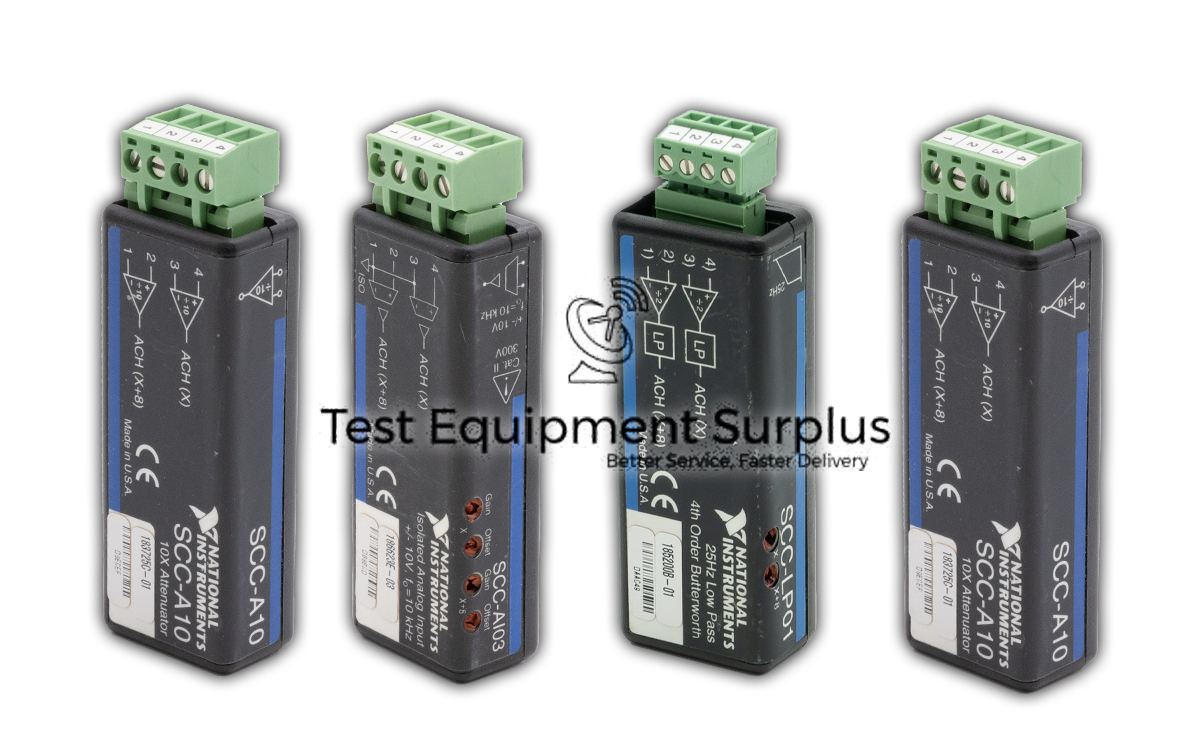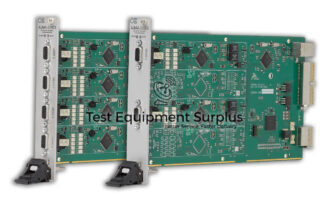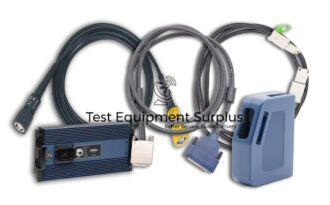Description
The NI SCC-DI01 Digital Input Module for SCC, with Part Number 777459-11, is a high-performance module featuring a solitary channel that is optically isolated. This module is adept at detecting both AC and DC digital signals, including TTL, up to a range of 30 VDC or 30 VAC. A distinguishing feature of the module is its integrated Status LED Indicator, which provides immediate visual feedback by indicating a logic high or low status.
For determining a logic high, the SCC-DI01 requires a positive or negative DC voltage of at least 2 V. In terms of AC signal detection for a logic high, sinusoidal signals must meet or exceed 1 kHz in frequency and 4 Vrms in amplitude. To ensure the safety of connected devices, the module includes an Isolation Barrier designed to protect against voltages up to +42 VDC.
Despite the announcement of its Obsolete Status by National Instruments, the SCC-DI01 remains accessible for purchase and repairs through Apex Waves, ensuring continued support for users of this module.
| Specification | Detail |
|---|---|
| Part Number | 777459-11 |
| Product Name | NI SCC-DI01 Digital Input Module for SCC |
| Channel | Solitary channel, optically isolated |
| Digital Signal Detection | AC and DC signals, including TTL, up to 30 VDC or 30 VAC |
| Status LED Indicator | Yes (Indicates logic high or low) |
| Logic High Voltage Threshold | Positive or negative DC voltage of 2 V or more |
| AC Voltage for Logic High | Sinusoidal signals of 1 kHz or higher frequency and 4 Vrms or higher amplitude |
| Isolation Barrier | Protects from voltages up to +42 VDC |
| Obsolete Status | Declared by National Instruments, available for purchase and repairs by Apex Waves |
Question 1: What are the voltage and frequency thresholds for detecting a logic high with the SCC-DI01 Digital Input Module?
Answer 1: The NI SCC-DI01 Digital Input Module requires a positive or negative DC voltage of at least 2 V to detect a logic high, and for AC signal detection, it requires sinusoidal signals to meet or exceed 1 kHz in frequency and 4 Vrms in amplitude to determine a logic high.
Question 2: What are the specific voltage requirements for the NI SCC-DI01 Digital Input Module to detect a logic high, both in terms of DC and AC signals?
Answer 2: For the NI SCC-DI01 Digital Input Module to detect a logic high, DC signals must be at least 2 V (positive or negative), and AC signals must have a frequency of at least 1 kHz and an amplitude of 4 Vrms or more.
Question 3: What are the minimum DC and AC signal requirements for detecting a logic high using the NI SCC-DI01 Digital Input Module?
Answer 3: The SCC-DI01 Digital Input Module requires a minimum positive or negative DC voltage of 2 V to determine a logic high, and for AC signal detection, it necessitates a sinusoidal signal with a frequency of at least 1 kHz and an amplitude of 4 Vrms or more.
Question 4: What are the requirements for a logic high detection in both DC and AC signals when using the NI SCC-DI01 Digital Input Module?
Answer 4: The NI SCC-DI01 Digital Input Module requires a minimum positive or negative DC voltage of 2 V and an AC sinusoidal signal of at least 1 kHz in frequency and 4 Vrms in amplitude to detect a logic high.
Question 5: What are the voltage requirements for detecting a logic high AC signal using the NI SCC-DI01 Digital Input Module, and what feature ensures safety against high voltages?
Answer 5: The NI SCC-DI01 Digital Input Module requires AC signals to have a frequency of at least 1 kHz and an amplitude of 4 Vrms to detect a logic high, and it features an Isolation Barrier to protect against voltages up to +42 VDC for the safety of connected devices.




